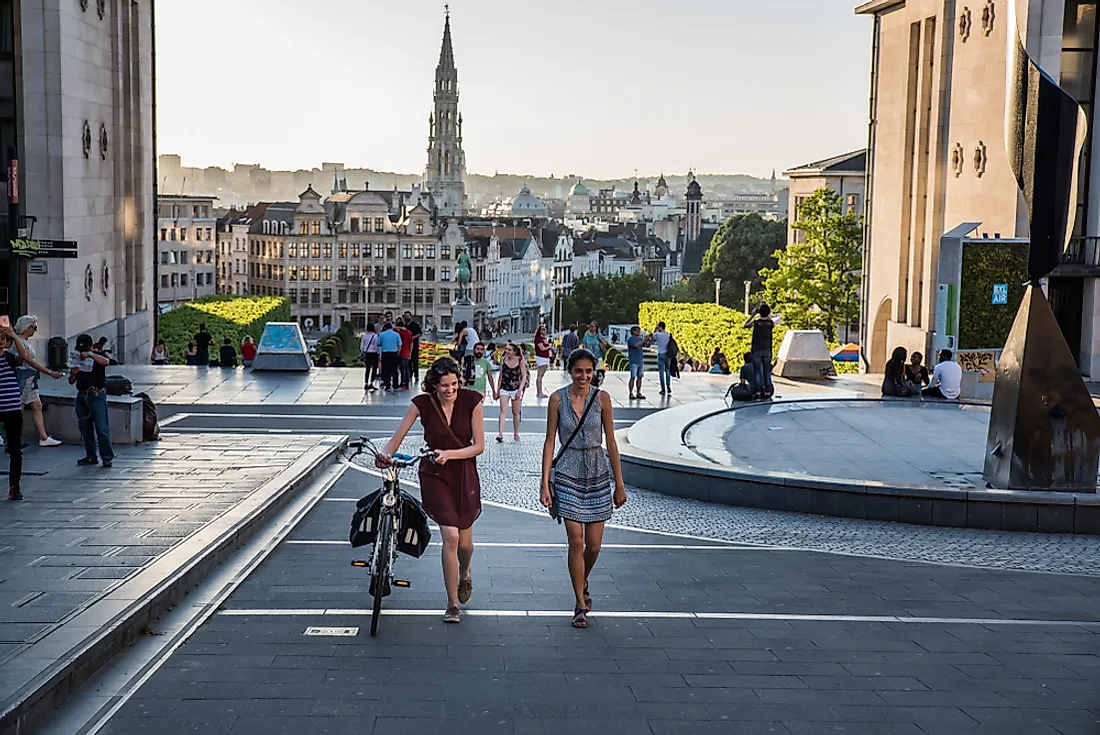Largest Ethnic Groups And Nationalities In Belgium

Belgium covers an area of 30,278 km squared in Western Europe. The country gained independence from the Netherlands in 1830, but was later occupied by Germany during the First and Second World Wars. The capital city is Brussels, which is home to many international organizations like NATO and UE. The country borders France, Luxembourg, Germany and Netherlands by land. Belgium had a population of 11,190,846 people at the start of 2015. The majority of this population is made up of the Dutch-speaking Flemish group.
Flemish
The Flemish trace their ancestry to medieval Flanders which today occupies the northern part of Belgium. In early centuries, Belgium had been occupied by the Celtic tribes which were eventually conquered by Germanic people. The Germanic people influenced the development of the Dutch language which is widely spoken by the Flemish.
Belgium came under several occupations beginning the 16th century from Spain, France, and Netherlands. The Flemish, in collaboration with the Walloons, staged revolts under the rule of Netherlands and Belgium attained self-rule in 1830. In 1993, Flanders and Wallonia were recognized as autonomous regions in the country.
The Flemish speak Flemish, a variation of the Dutch language, which is an official language in Belgium. The Flemish people hold colorful festivals and events, mostly based on local folklore. Industries such as textiles, automobiles, and tourism contribute to the economy of the Flanders region.
Walloon
The Walloons mainly occupy the Southern and Eastern parts of Belgium, and they number about 3,700,000. As the Germanic people invaded northern Belgium, the Roman rule in Southern Belgium continued to prosper. The Roman and Latin dialects influenced the French language spoken by contemporary Wallonian people.
The Walloon are majorly Roman Catholic with a minor presence of Russian Orthodox, Protestants, Jews and Greek Orthodox. Agricultural production is a significant commercial activity in Wallonia, mainly producing sugar beets, potatoes, and wheat. Some of the Walloon people visit cemeteries on All Saint’s Day to clean their deceased tombs, in the belief that the spirits of the dead come back to earth. The Walloon people reside in storeyed row houses built with brick.
Italian
Italians make up around 450,000 of Belgium’s total population. Italians represent the largest migratory group in Belgium. Belgium opened its borders beginning 1968 to European Union nationals. The first wave of Italian citizens in Belgium went to seek employment. Family unification also increased the Italian population in Belgium.
Moroccan
Belgium has 220,000 people of Moroccan ancestry. The Moroccan immigrants mainly came to Belgium after the World War II as labor for Belgium’s booming coal mining industry. Immigration was halted in the 1970s due to an economic crisis in Belgium. The Moroccan community continued to grow primarily because of the reuniting of family units. Most of these immigrants are concentrated in urban areas in Belgium and continue to be a working population.
Future Trends
A population of 75,000 in contemporary Belgium has German ancestry. Belgium’s birth rate is expected to remain steady while the life expectancy rate is set to increase. The population of Belgium is forecasted to reach 11.4 million in 2020. Belgium’s population is expected to be affected by increasing globalization and migratory patterns. A growing Muslim population in Belgium is predicted to reach 10.2% of the total population by 2030.
Largest Ethnic Groups And Nationalities In Belgium
| Rank | Ethnic Group or Nationality | Population in Contemporary Belgium |
|---|---|---|
| 1 | Flemish | 6,450,765 |
| 2 | Walloon | 3,700,000 |
| 3 | Italian | 450,000 |
| 4 | Moroccan | 220,000 |
| 5 | German | 75,000 |











